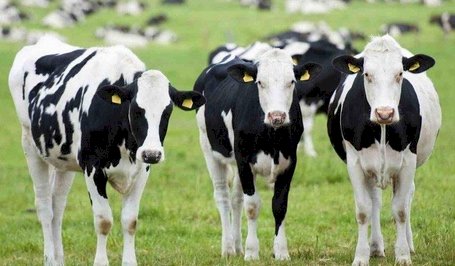Ag Tech Sunday - How an urgent issue is driving innovation
- By: "Farm Tender" News
- Ag Tech News
- May 09, 2021
- 742 views
- Share

By AgThentic
Recently the Australian Broadcasting Corporation’s Foreign Correspondent highlighted the problems caused by the rapid expansion of dairy in New Zealand, reporting that, “up to 99% of rivers running through urban, farming and non-native forested areas are polluted” due to nitrate leaching.
The New Zealand Government has responded by making Farm Environment Plans compulsory for all farms larger than 20 hectares.
In this podcast episode, we chat with dairy farmer and 2018 Nuffield scholar, Mat Hocken, and Bridgit Hawkins, Chief Sustainability Officer for Crop X, New Zealand, for a look at how these regulations are acting as a driver for innovation and adoption.
What is a Farm Environmental Management Plan (FEMP)?
According to the Dairy NZ website, “a FEMP is a tool that can help you recognise on-farm environmental risks and set out a programme to manage those risks.”
While what’s in each farm’s plan will vary depending on factors such as their practices, size, and goals, the basics are the same: it’s a living document meant to capture basic farm information (location, size, etc.) as well as environmental risks and the plans or actions in place to address the risks.
Resistance to government-imposed paperwork or more tools makes sense, but Mat says FEMPs are, “actually a really positive way for farmers to think about where is the opportunity to improve” across land, people, animals, and financials, as well as environmental risks.
FEMPs also provide a way to push back against a negative image of agriculture, helping farmers adopt practices such as excluding stock from waterways and planting trees that both have productivity benefits as well as demonstrate claims that they’re in fact “ practical greenies”- providing solutions to environmental challenges.
And collecting the data matters to the bottom line, too. Mat explains, “when we digitize the data, it means that we can use that information for different purposes, [not only to] to manage our footprints, [but also] to manage our productivity much better.”
Is NZ behind or ahead with these regulations? And are they actually driving change?
There’s pressure around the world for agriculture to “do better” in terms of environmental outcomes. But is NZ’s regulatory approach unique, or something we can expect to see from other countries soon?
Bridgit says that globally, the expectations being placed on agriculture are the same. But in NZ, it’s not just talk- action is happening to drive change.
“As far as I understand, it's not the same granularity of what people have to report on as in other countries… We have a process of auditing, and actual enforcement. In other countries, the expectation is the same, but if you don’t do it, nothing much happens. Whereas here in New Zealand, if you’re not moving forward and actually carrying on improving until you meet those standards, there are consequences.”
Whether you believe this level of government intervention is good or bad probably depends where (and who) you are, but one thing seems to be increasingly clear: the regulations are driving change. In particular, adoption of technologies that can help, for example with water management, seems to be increasing.
Bridgit explains that soil moisture monitoring is not new technology- in fact, it has been around for many years, backed by sound science and proven case studies. Yet, adoption has remained low. Having a regulatory driver, though, is increasing uptake.
[For more on adoption of irrigation tech in particular, check out this episode and our free report]
Will we see “carrots” along with regulatory “sticks”?
Regulation is of course just one way to drive behavior change toward more environmentally-friendly outcomes. All along the supply chain, and across basically every commodity, we’re seeing strategies and tactics rolled out to shift farming practices to meet consumer’s seemingly insatiable demand for “better” products, and to relieve ESG-related pressures on brands.
As we’ve talked about before in other episodes (e.g., with soil carbon), there are a range of ways farmers can benefit, from long term contracts, to support programs for practice change and premiums.
Mat believes these incentives are key to creating value for farmers, as well as buy-in across the farming team- the people who actually need to make the changes. Right now in dairy, milk quality is an example of something that earns a premium. As we move beyond this to environmentally-focused outcomes, the same principles apply.
“The farmers that I've talked to really get into those programs and get a lot out of them if they're structured in the right way. The stick prevents the worst behavior, but it doesn't really lead us to a place where you're actually incentivized to do well. The team at the coalface needs to get value out of it.”
For more insights from Mat and Bridgit, listen to the full episode above or wherever you get your podcasts.
Resources and relevant links from the episode
- Mat Hocken owner/operator at Grassmere Dairy
- Bridgit Hawkins Chief Sustainability Officer at CropX, NZ
- Rural Innovation Lab
- Troubling Waters from ABC’s Foreign Correspondent
- The agtech adoption dilemma: irrigation









Share Ag News Via